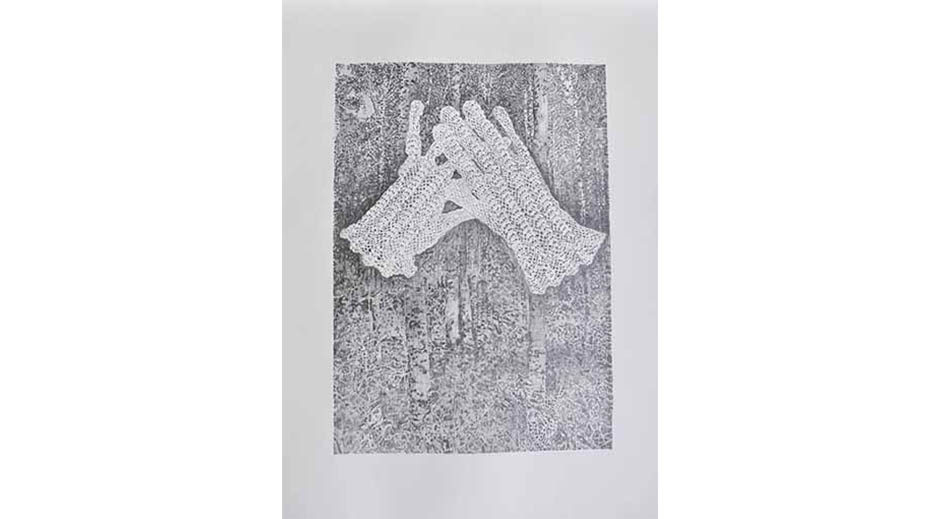
Elisa Alaluusua grew up in Finnish Lapland and now lives in London where she works in the field of drawing using paper as well as video.
She finds inspiration from the extremes of quiet country living in her home village, Luusua, on the family reindeer farm and life in London.
She has conducted research on Sketchbooks and the results can be seen in her Sketchbook exhibitions that take a variety of forms as they tour around. She welcomes invitations to show her work from galleries, museums and educational institutions.
“You start with an idea, or rather with something that troubles or fascinates you; often it is the same old story. Every artist has their core interests, or lifeline, and they keep trying to make sense of it through their work. I sometimes think that I do quite varied works – I might work with lace or birch trees or simple repeated motifs such as a line or a circle – but what it really is all about is our everyday experiences, restrictions, and the repetition of those. At the heart of it is the sense of identity, feelings of belonging and the interpretation of the idea of home.
Other people’s everyday life experiences are fascinating. It is easy to forget that what is ordinary, and even mundane for one person, can be a completely alien way of living for another. For me it is a challenge and an honour to be able to share some of those stories. My sketchbook videos are a good example of those kinds of works where I’ve been allowed access to the world of different artists and their way of thinking on their sketchbook pages. Or my graphite drawings on paper from lace items obsessively crocheted by an elderly relative where I am trying to honour her legacy, the endless hours spent working on her craft.
I believe that exploration of identity becomes important for many artists who have left their homes and relocated themselves, for whatever reasons, in a new country or completely different environment. To me that is the absolute fascination, coming from Lapland and growing up in a reindeer farm, and then ending up living in London. It is ironic because I always felt that even Helsinki would be too big a place for me to live in, and now, twenty years on, I’m still in London. Those are two extremely different places and I feel very lucky to have had these experiences. For better or worse, I am always the outsider, the visitor, the observer – to me that is a fluctuating state of mind and I try to embrace it.
Making the work is straightforward. You make a mark on a surface, or you choose a video clip, and then you react to the first mark or the image and carry on; the whole is built from those reactions. It is a linear process, a time-based journey, with a beginning, a middle and an end. You can intellectualise, analyse and contextualise the work later, but the process of making is very simple for me. Trying to find boundaries and exploring one’s own comfort zone is part of the process. My drawings on paper often consist of repeated marks and follow certain rules. Drawings are made, for example, with one continuous line or by drawing and counting the marks made while drawing 100 overlapping circles. I have been asked why do I make my 24-hour durational drawings and the answer is linked to my experiences in Lapland. I miss physical challenges that are thrown at you when you grow up on a farm living in tune with nature. Living in a city does not require the same physical effort; like clearing the snow outside the front door so that you can get to the car and drive to work through darkness because the sun only comes out for a few hours in the mid-winter. The cycle of life happens in front of your eyes in Lapland where seasons are very different from warm summer days of +30C to -40C in winter time. Making a large-scale drawing without sleep for 24-hours nonstop does not even start to compare to the challenges of six months of snow on the ground! The circle as a motif represents the never-ending repetition of everyday tasks and the constantly changing seasons.”

